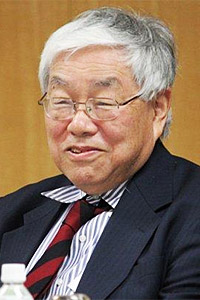Haruhiko Kuroda's ten-year tenure at the helm of the Bank of Japan was the most consequential in the central bank's history. Following his departure last month, it is worth reflecting on his record.
When former prime minister Shinzo Abe (who was assassinated last year) appointed Mr Kuroda to lead the BOJ in 2013, Japan had been mired in deflation and recession for two decades. The legacy of the 2008 global financial crisis -- which had spurred massive monetary expansion in the advanced economies -- was not helping matters.
Because the exchange rate between two currencies is influenced by the relative size of their money supplies, a significant expansion of the US dollar base easily could have driven up the value of the Japanese yen, hurting Japanese firms. To prevent this, the BOJ had to launch expansionary policies of its own.
Mr Kuroda's predecessor, Masaaki Shirakawa, hardly understood this, and his policies did not go nearly far enough. As a result, the yen appreciated, hurting Japanese business. Productivity growth lagged, and GDP growth remained elusive. Moreover, like his predecessors -- with the possible exception of Toshihiko Fukui -- Mr Shirakawa failed to prevent a rise in unemployment. The "tent villages" housing the homeless near major cities grew.
But Abe had a plan for restoring Japan's economy. So-called Abenomics included three "arrows": fiscal stimulus, expansionary monetary policy, and growth-enhancing economic and regulatory reforms. Abe believed that Mr Kuroda was the best candidate to oversee the first component. It proved to be a wise choice.
After his appointment was confirmed, Mr Kuroda quickly launched his "bazooka" programme, an extraordinary effort to raise inflation expectations by purchasing massive amounts of government debt. Beyond bonds -- the conventional approach to quantitative easing -- Mr Kuroda's BOJ also bought equities. He communicated his goals using a "2-2-2" framework: double the monetary base in two years in order to achieve 2% inflation.
The effects of the stimulus were reflected in the labour market. By the fiscal year that ended in March 2018, the ratio of job openings to applicants -- a measure of labour-market tightness – had reached 1.62, versus 0.97 in the fiscal year that ended in March 2013 (the last year of Mr Shirakawa's leadership). And the increase has endured: in the 2022 calendar year, the ratio of job openings to applicants stood at 1.28, despite the adverse effects of the pandemic.
In absolute terms, more than four million new jobs were created in Japan during Mr Kuroda's decade leading the BOJ. Tent villages disappeared, and university students gained confidence that they would find gainful employment after graduation. In fact, the main beneficiaries were younger people, many of whom got jobs as non-regular employees. (The older generations continued to rely on the protection of Japan's traditional lifetime-employment system, a hallmark of the country's inefficient dual labour market.)
While Abe continued to enjoy broad popular support, many critics of Abenomics point out that Japan never achieved its 2% inflation target. Moreover, they declare, the expansionary policies at the heart of Abenomics have left Japan vulnerable to an inflationary surge. Even Mr Shirakawa recently suggested as much.
But there are no signs of runaway inflation in Japan. What the data do show is that Abenomics, implemented partly by Kuroda, led to a dramatic strengthening of the labour market and increased employment, which is vital to people's immediate economic well-being and longer-term confidence. In fact, an important reason why central banks use inflation targets is precisely to advance the goal of full employment.
Chinese leader Deng Xiaoping once quipped, "Black cat or white cat, if it can catch mice, it is a good cat." Mr Shirakawa may have been a capable and dedicated central-bank governor, but if we are comparing "mouse-catching" records -- that is, policy outcomes -- his record falls far short of what Kuroda achieved. (The reader might be amused to learn that, in Japanese, the surname Shirakawa means "a white river," and Kuroda means "a black field.")
Mr Kuroda plans to spend his post-BOJ years lecturing on fiscal and monetary policy to university students and pursuing research in philosophy -- his personal scholarly interest. One hopes that he gains fulfilment from the next phase of his career. He has earned it. ©2023 Project Syndicate
Koichi Hamada, Professor Emeritus at Yale University, was a special adviser to former Japanese Prime Minister Shinzo Abe.
